Natalia Grima | |
|---|---|
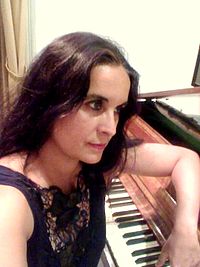 | |
| Background information | |
| Origin | Argentina |
| Genres | Piano music |
| Occupation(s) | teacher, pianist, |
| Instruments | Piano |
Natalia Grima is an Argentinean pianist and musical educator.
Natalia Grima | |
|---|---|
 | |
| Background information | |
| Origin | Argentina |
| Genres | Piano music |
| Occupation(s) | teacher, pianist, |
| Instruments | Piano |
Natalia Grima is an Argentinean pianist and musical educator.
Grima was born in San Miguel de Tucumán, in 1970s, and is living in Buenos Aires since 2004.
She is the founder and chair of Suzuki Piano School in Buenos Aires , the first piano school in the city specialized in the Suzuki method. [1]
Natalia holds a Bachelor of Arts degree with a major in Music from Universidad Nacional de Tucumán, from which she graduated summa cum laude. Before, at Vicente Scaramuzza’s Piano School, she was educated by Oscar Buriek, Carmen Scalcione and Ana Laura Stampalia. She is a solo player, [2] but also plays in orchestras and other musical ensembles, [3] in Argentina, Peru, United States and Switzerland.
On 2004, for her contributions to culture though musical education, she was awarded the “Mujer Destacada de Nuestro Medio” by the City of San Miguel de Tucumán. On 2007, the Argentinean Federation of university women offered her with the FAMU Medal, [4] the highest distinction of the Suzuki institution, among 82 nominees with outstanding grade averages at university. On 2011, Natalia represented Argentina at the “V Encuentro Suzuki de América Latina”, in Lima, Peru with the exposition “De la estimulación musical temprana a la ejecución instrumental”.
Two years later, the pianist was selected by the Ministry of Foreign Affairs to represent Argentina in a musical training at Holy Names University, in California, USA. And on 2015, again she was chosen to by the same office to represent her country at the International Congress that commemorated a 100 years of the Jaques Dalcroze Institut in Geneva, Switzerland.
Since 1997, she is specialized in the Musical/Pianistic Education at the Education for Talent or Mother Tongue Method (Suzuki Method). She thus received numerous scholarships by the Suzuki Association of the Americas, USA to pursue her training in Argentina, Chile, Perú, Estados Unidos, and even in Europe, at Cambridge University in the United Kingdom and Spain, where she met Caroline Fraser, Doris Koppelman and Mary Craig Powell among other famous pianists. She also followed other methods, such as: Dalcroze Method; Kodaly Method; RYE Method (Recherche Sur Yoga dans L’Education- Research on Yoga in Education) and Alexander Method.
Juan María Solare is an Argentine composer and pianist.

San Miguel de Tucumán is the capital and largest city of Tucumán Province, located in northern Argentina 1,311 kilometres (815 mi) from Buenos Aires. It is the fifth-largest city of Argentina after Buenos Aires, Córdoba, Rosario and Mendoza and the most important of the northern region. The Spanish conquistador Diego de Villarroel founded the city in 1565 in the course of an expedition from present-day Peru. Tucumán moved to its present site in 1685.

Tucumán is the most densely populated, and the second-smallest by land area, of the provinces of Argentina.
The Conservatorio Nacional Superior de Música is the national music conservatory for Argentina and it is located in Buenos Aires.
The Chacarera is a dance and music that originated in Santiago del Estero, Argentina. It is a genre of folk music that, for many Argentines, serves as a rural counterpart to the cosmopolitan imagery of the Tango. A dance form played by contemporary musicians as soloists or in small ensembles of voice, guitar, violin and bombo drum, the Chacarera is often legitimized by its “origin” in the remote province of Santiago del Estero. It is also the product of a romanticized construction of national identity projected by urban cultural institutions and disseminated through the mass media.
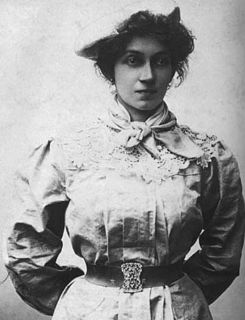
Dolores Candelaria Mora Vega known professionally as Lola Mora, was a sculptor born in San Miguel de Tucumán, in Argentina. She is known today as a rebel and a pioneer of women in her artistic field.
La Gaceta is a daily newspaper founded in San Miguel de Tucumán, Argentina, and the most prominent in the Argentine Northwest.

Amelia Bence was an Argentine film actress and one of the divas of the Golden Age of Argentine Cinema (1940–60).

José Ignacio García Hamilton was an Argentine writer, noted historian, lawyer and politician. He was elected to the Argentine Chamber of Deputies for the Radical Civic Union representing Tucumán Province.
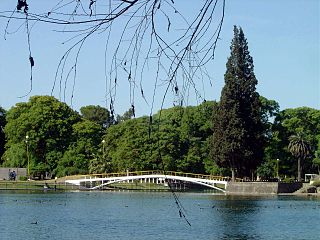
Ninth of July Park is the largest public park in the city of San Miguel de Tucumán, Argentina.

Carlos Alvarado-Larroucau is an Argentine-born French author, born in Argentina in 1964.
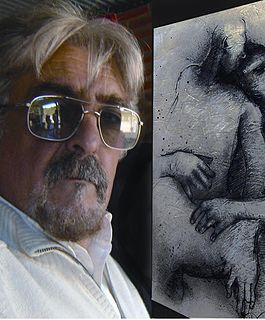
Donato Grima is an Argentine visual artist. He studied arts and design. During the 1970s, he moved to Caracas, Venezuela. He did not return to his home country until the mid 1980s, together with the restoration of democracy. From the 1990s until 2001 he lived in Spain. His painting The Patriarchs is in the collection of the Museo del Barrio of New York City. Other museums and private collections in several countries in Latin America and Europe bought part of his work. By 1993 he founded, in Argentina, The Center of Art & Design, institution devoted to the education in art and design. In 2009 he created his art gallery Art Territory in Tucumán.

The Argentine War of Independence was fought from 1810 to 1818 by Argentine patriotic forces under Manuel Belgrano, Juan José Castelli and José de San Martín against royalist forces loyal to the Spanish crown. On July 9, 1816, an assembly met in San Miguel de Tucumán, declared full independence with provisions for a national constitution.

Beatriz Liliana Rojkés de Alperovich is an Argentine speech therapist, businesswoman, and Justicialist Party politician. She was elected to the Argentine Senate in 2009, and in 2011 became the first woman and first Jew to be designated as its Provisional President; the post put her second in Argentine line of succession, after Vice President Amado Boudou.

Elvira Amanda Orphée was an Argentine writer.

Amelia Cabeza de Pelayo Patterson was an Argentine composer, singer, poet, and teacher responsible for writing the anthem of the Province of Salta. She was very popular in Argentina, and much of her music received state approval from the Ministry of Education of Argentina.
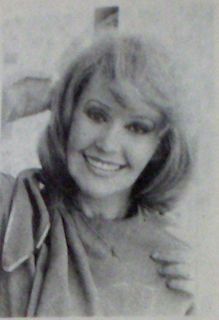
Nelly Beatriz Bonnet was an Argentine film and television actress and comedian.
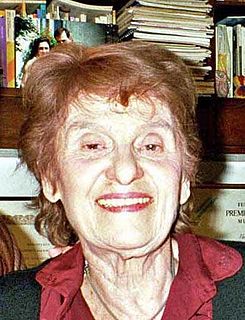
Violeta Hemsy de Gainza is an Argentine pianist and piano pedagogue.

Leda Valladares was an Argentine singer, songwriter, musicologist and folklorist, and poet. Born in San Miguel de Tucumán in northern Argentina, she grew up surrounded by both classical European music and the folk music of the Amerindian people living in the area. From a young age she studied piano and in her teens began a band with her brother that explored folk music, jazz, and blues. She published works of poetry throughout her life. Although she began her university studies at the National University of Tucumán as an English major, after a year she changed course and studied philosophy and education, graduating in 1948. Her schooling was interrupted by a foray into the study of music at the Academy of Fine Art and in independent research among those who performed traditional folk music.
Rosa Antonelli is an Argentine pianist, she was appointed Steinway Artist by Steinway & Sons since 1998 and currently based in New York.